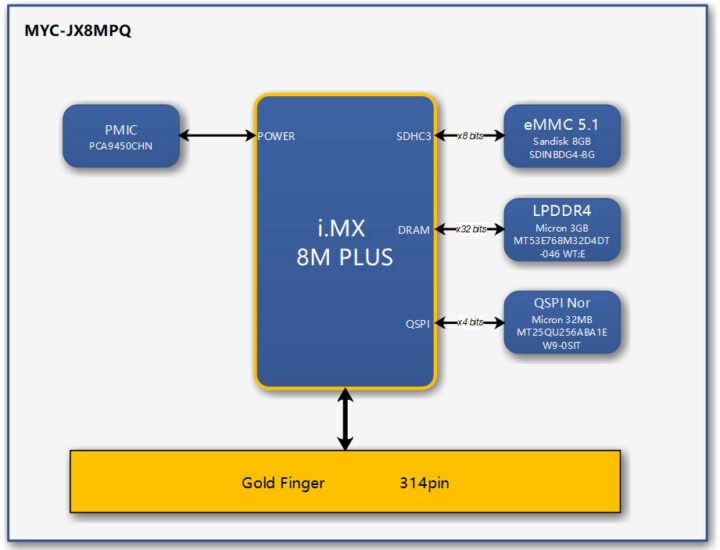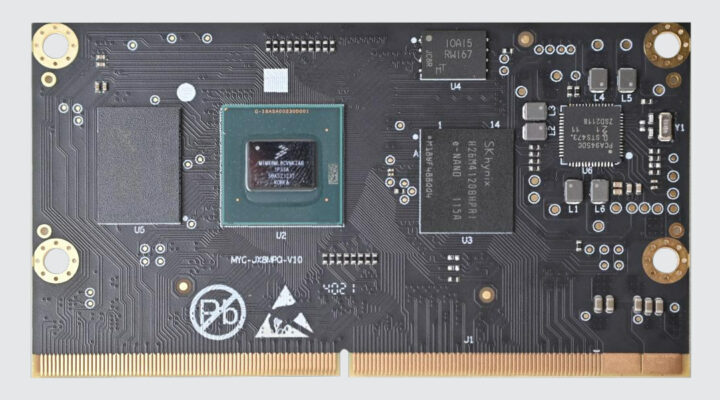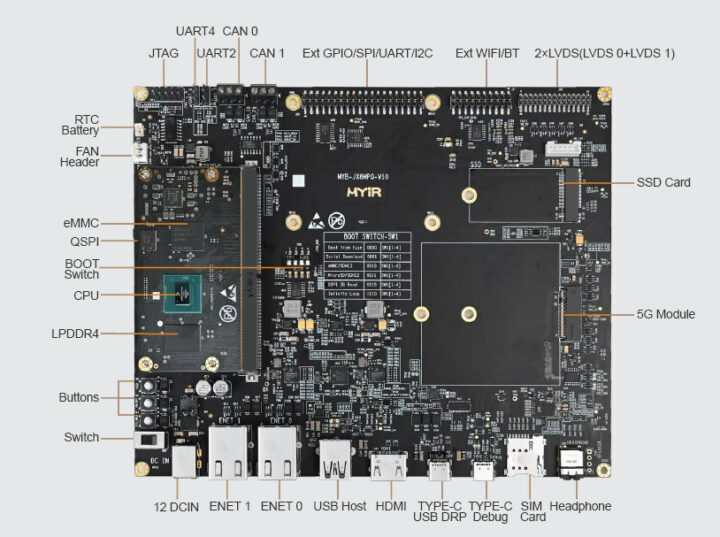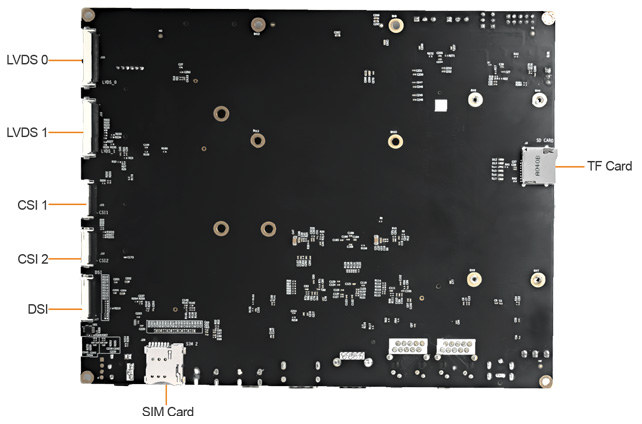There are already plenty of i.MX 8M Plus systems-on-module, but here’s one more courtesy of MYIR Tech with MYC-JX8MPQ i.MX 8M Plus module with as well as MYD-JX8MPQ development board for evaluating the solution.
The module is especially well suited to applications leveraging Artificial Intelligence (AI) and Machine Learning (ML) with the NXP Cortex-A53/M7 integrating a 2.3 TOPS Neural Processing Unit (NPU). The module comes with up to 6GB LPDDR4, 128GB eMMC flash, 32MB QSPI flash, a PMIC for power management, as well as a 314-pin MXM 3.0 connector exposing the I/Os from the processor.
MYC-JX8MPQ module specifications:
- SoC – NXP i.MX 8M Plus (MIMX8ML8CVNKZAB) quad-core Cortex-A53 processor @ 1.6 GHz, real-time Arm Cortex-M7 co-processor @ 800 MHz, 2.3 TOPS AI accelerator, 2D/3D GPU, HiFi4 Audio DSP, and 1080p VPU
- System Memory – 3GB LPDDR4 (option up to 6GB)
- Storage – 8GB eMMC flash (option up to 128GB), 32MB QSPI flash
- 0.5mm pitch 314-pin MXM 3.0 edge connector with:
- Storage – 2x uSDHC (uSDHC1: 8bit width, uSDHC2: 4bit width)
- Display – 1x HDMI, 2x LVDS, 1x MIPI DSI
- Camera – 2 MIPI CSI
- Audio I/F
- Networking – 2x 10/100/1000Mbps Gigabit Ethernet
- Serial – 2x CAN
- USB – 2x USB 3.0
- PCIe -1x PCIe 3.0
- Low-speed I/O – 4x UART, 6 x I2C, 3x SPI
- Power Supply – +5V/1.1A (max); PMIC
- Dimensions – 82 x 45mm (8-layer PCB)
- Temperature Range – 0~70°C (commercial grade) or -40~85°C (industrial grade)

The company provides a Linux 5.10.9 SDK for the module with all necessary drivers, including WM8960 audio driver, OV5640 camera driver, AP6212 WiFi driver, and a driver for EC20/RM500-Q 5G LTE module that can be used with the company’s carrier board. MYIR expects customers to integrate the module into products handling machine learning and vision, advanced multimedia, and industrial automation applications.
In order to quickly get started, most customers will end up using MYD-JX8MPQ development board with various display interfaces (HDMI, 2x LVDS, MIPI DSI…), two MIPI CSI camera Interfaces, dual Gigabit Ethernet, two M.2 sockets for expansion (5G module and/or NVMe SSD), USB 3.0 Host/OTG interfaces, UARTs, dual CAN, as well as a header for WiFi/Bluetooth, a 40-pin Raspberry Pi-like GPIO header with UART/I2C/SPI/GPIO, and more.
While public documentation is limited, one advantage of MYIR Tech is that they provide some public pricing information about their modules and development boards. The commercial version of MYC-JX8MPQ with 3GB RAM, 8GB eMMC flash, 32MB QSPI flash goes for $115, while the industrial-grade model sells for $129. The development kit with power supply, carrier board, module, and accessories is offered for $335 (commercial) and $349 (industrial) respectively. You’ll find additional information and the purchase links on the product page.

Jean-Luc started CNX Software in 2010 as a part-time endeavor, before quitting his job as a software engineering manager, and starting to write daily news, and reviews full time later in 2011.
Support CNX Software! Donate via cryptocurrencies, become a Patron on Patreon, or purchase goods on Amazon or Aliexpress







